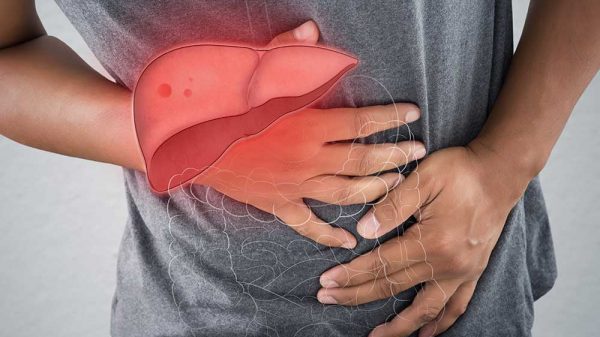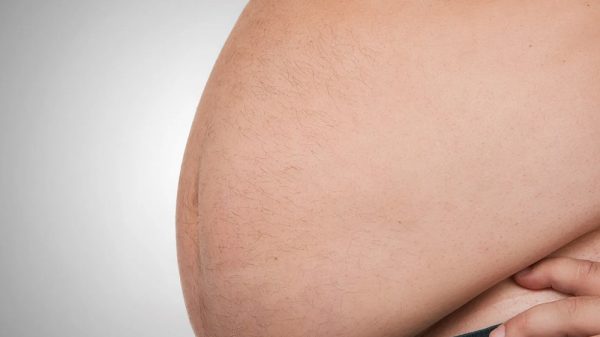If you have liver disease, you may be wondering: can liver damage be reversed? The good news is that in many cases, liver damage is reversible. Other forms of liver damage may not be reversible, though further damage can be prevented. Here we go through what it means to have conditions like nonalcoholic fatty liver disease, alcoholic liver disease, cirrhosis, and fibrosis. We discuss tips for reversing these liver conditions and preventing progression. Read on to find out more!
The Importance of the Liver: Can You Live Without a Liver?
Before we go on, let’s first discuss why the liver is such a remarkable organ and its function in the body.
The liver is like the body’s chemical processing plant and plays a critical role in breaking down and synthesizing compounds in the body. Here are a few examples of the liver’s job:
- Detoxifying compounds: The liver is responsible for metabolizing substances like alcohol, acetaminophen, and other substances. The liver breaks down these compounds and makes them ready for the body to use and excrete. For this reason, the liver is also vulnerable to oxidative stress and inflammation from chemical exposure.
- Bile production: Bile is a substance that the liver produces to help break down dietary fats that we consume. Bile then travels to the gallbladder and small intestine to help with digestion.
- Supporting metabolic functions: The liver plays a vital role in supporting the body’s metabolism by producing glycogen and cholesterol.
- Amino acids: The liver is responsible for monitoring the amino acid content of the blood. Amino acids are critical for producing neurotransmitters, muscle tissue, enzymes, and other proteins in the body.
Signs of Compromised Liver Function
If you have liver disease, there are signs and symptoms that you may exhibit. Keep in mind that liver conditions may not be accompanied by any symptoms during the early stages. The only way to know if you have a liver disease is by visiting your health care provider and undergoing necessary testing.
- Elevated liver enzymes: Elevated liver enzymes show up on blood tests that you get as part of a routine check-up. High levels of liver enzymes like aspartate transaminase and alanine transaminase suggest liver inflammation.
- Jaundice: When the liver isn’t working properly, excess bilirubin travels through blood vessels and causes yellowing of the skin and whites of the eyes.
- Fatigue: Fatigue and loss of energy are common symptoms of liver disease.
- Weight loss: Liver conditions may cause changes in appetite and unintended weight loss. Later stages of liver disease are also characterized by muscle wasting.
- Ascites and edema: Individuals with progressed forms of liver disease may experience ascites, which describes swelling in the abdomen. Edema is also common in the legs.
- Hepatic encephalopathy: Hepatic encephalopathy develops in later stages of liver disease and is characterized by mental symptoms like anxiety, confusion, and personality changes.
If the liver becomes damaged, is liver regeneration possible? Absolutely! Its ability to regenerate and adaptability are fundamental characteristics of the liver. Because the liver can regenerate and regrow damaged liver cells and tissue, it can repair from damage.
Diagnosing Liver Disease
As mentioned above, you may experience no symptoms in the early stages of liver disease. Your physician will be able to confirm the presence of liver disease through a series of tests. Imaging tests like ultrasounds and CT scans can reveal the texture of liver tissue as well as the presence of abnormalities like fat, nodules, and other growths.
A liver biopsy is also helpful for diagnosing liver disease and requires taking a tiny sample from your liver to examine abnormalities. You may see specialists in internal medicine, hepatology, and gastroenterology when diagnosed with liver disease.
Nonalcoholic Fatty Liver Disease
Nonalcoholic fatty liver disease (NAFLD) is a common condition among adults in the United States. NAFLD is a liver condition that often develops in conjunction with metabolic disorders. NAFLD is characterized by the accumulation of fat within liver tissue. Obesity, insulin resistance, type 2 diabetes, and high cholesterol are conditions that are risk factors for developing NAFLD.
NAFLD can be reversed, especially in the early stages. No scarring has occurred in the early stages of the condition, and NAFLD is highly responsive to diet and lifestyle changes.
Alcoholic Fatty Liver Disease
Alcoholic fatty liver disease (AFLD) results from heavy alcohol use, or alcohol abuse. Drinking alcohol causes inflammation in the liver, which causes fat to build up in liver tissue. Can liver damage from alcohol be reversed? It depends on how progressed the alcohol-related damage is. However, like NAFLD, AFLD is also very responsive to diet and lifestyle changes in the early stages.
Liver Fibrosis and Cirrhosis
Liver fibrosis and cirrhosis occur when the early stages of liver disease continue for years without intervention and treatment. Liver fibrosis is a process that results in the accumulation of scar tissue within the liver. Continued damage and inflammation cause tough, fibrous tissue to build up in the extracellular matrix surrounding liver cells. Over time, continued fibrosis produces so much scar tissue that it begins to impede normal liver function.
For example, NAFLD may progress to nonalcoholic steatohepatitis (NASH), which is characterized by inflammation and oxidative stress within liver tissue in addition to fat accumulation. Untreated, NASH may cause liver fibrosis and cirrhosis. Similarly, without intervention and continued alcohol consumption, AFLD may progress to alcoholic hepatitis, causing liver fibrosis and cirrhosis over time.
Liver fibrosis and liver cirrhosis are more difficult to reverse than NAFLD and AFLD. However, liver fibrosis and cirrhosis may still respond favorably to diet and lifestyle changes. Even if it proves difficult to reverse liver fibrosis and cirrhosis, leading a healthier lifestyle may help stop or slow the progression of cirrhosis. To find out more about the reversibility of liver cirrhosis, check out this article.
Tips for Reversing Liver Damage
Here are a few diet and lifestyle tips for reversing liver damage.
1. Eliminate Alcohol
Eliminating alcohol is a critical step in reversing liver damage. Alcohol is a significant inflammatory agent for the liver. When we drink alcohol, the liver must break it down into non-toxic compounds. Heavy drinking exposes the liver to lots of alcohol. This results in the buildup of free radicals that inflict damage on healthy tissue.
Eliminating alcohol consumption is crucial when you have AFLD. Removing the primary disease-causing factor allows the liver to utilize energy and resources for repair. Eliminating alcohol from your diet is also important if you have NAFLD and other liver conditions, because alcohol intensifies other disease-causing factors and worsens inflammation and damage.
2. Anti-Inflammatory Diet
A healthy lifestyle that supports the reversal of liver disease includes a liver-friendly diet. If you are striving to reverse liver damage, here are a few dietary guidelines:
- Avoid simple carbohydrates. Steer clear of sugar and refined carbohydrates. High consumption of simple carbs is a common cause of metabolic dysfunction and fat accumulation in the liver.
- Steer clear of saturated fat. Saturated fat found in fatty cuts of meat and dairy products clogs up insulin receptors and negatively influences metabolic function.
- Eat primarily whole foods. It’s important to eat a balanced diet that provides antioxidants, vitamins, minerals, fiber, essential amino acids from protein, healthy fats, and complex carbohydrates. Eating plenty of fruits, vegetables, whole grains, nuts, seeds, beans, fatty fish, and low-fat meat and dairy is vital for supporting liver health.
3. Weight Loss
If you have NAFLD, losing weight is a helpful tactic for reversing live inflammation. Carrying excess fat throughout the body may increase the amount of fat accumulation in the liver. Losing weight and reaching a healthy body weight may help rid the liver of fat deposits, decrease inflammation, and reverse fatty liver disease.
If you’re striving for healthy weight loss, it’s important to consume the number of calories that support your body type and activity level. Eating healthy foods, monitoring portion sizes, reducing stress levels, and incorporating physical activity into your daily routine are effective strategies for promoting weight loss.
4. Herbs, Spices, and Supplements
Certain herbs, spices, and supplements may help reduce liver inflammation. Milk thistle may be connected to less liver damage. Green tea and turmeric are other potent anti-inflammatory compounds that may help reverse liver damage.
Before adding any supplements to your dietary regimen, it’s important to get all supplements approved and cleared by your doctor.
When Is Liver Damage Irreparable?
Though the liver is highly adaptable and can repair in response to damage, there are some cases in which liver damage is beyond repair. For example, advanced liver cirrhosis and advanced liver cancer may lead to a condition called end-stage liver disease or liver failure. At this point, the liver has sustained so much damage that normal liver function has been completely compromised and liver cells are no longer able to regenerate.
When liver damage is beyond repair, the only form of treatment left is a liver transplant. A liver transplant entails replacing a damaged liver with a healthy liver from a donor.
Things to Keep in Mind
When striving to reverse liver damage, it’s imperative to also follow all of your doctor’s advice and treatments. Treating the underlying cause of liver damage is crucial for either reversing damage or halting damage progression. For example, if your case of liver inflammation is a result of hepatitis A, hepatitis B, or hepatitis C, your doctor may prescribe medications to take regularly to help resolve the condition.
The Verdict: Can Liver Damage Be Reversed?
In early liver disease stages, liver tissue is highly responsive to treatment, diet, and lifestyle changes. At later stages of liver fibrosis and cirrhosis, the damage becomes increasingly difficult to reverse. Intervening early in liver disease is crucial. NAFLD and AFLD respond favorably to healthy diet and lifestyle adjustments.
























